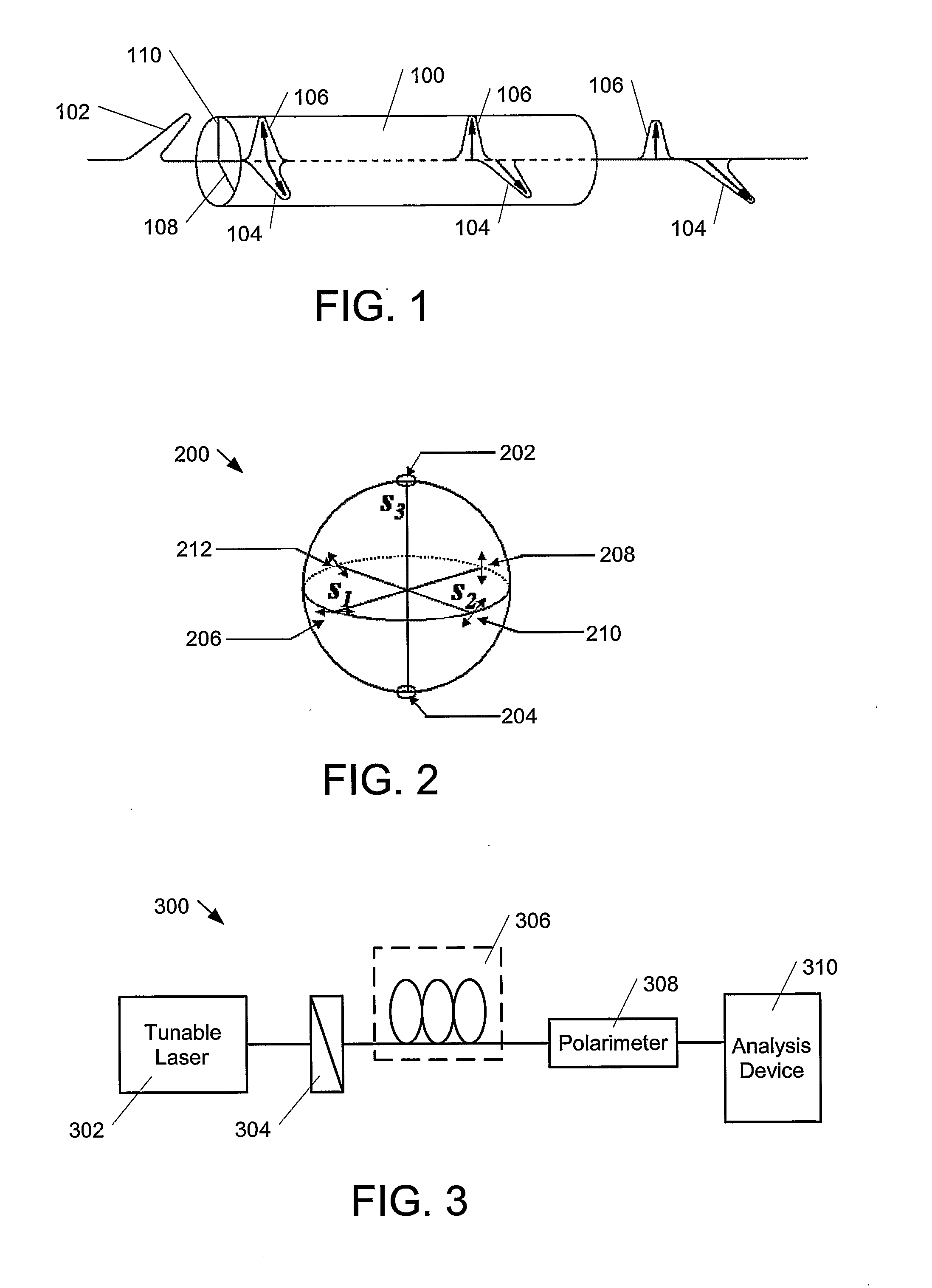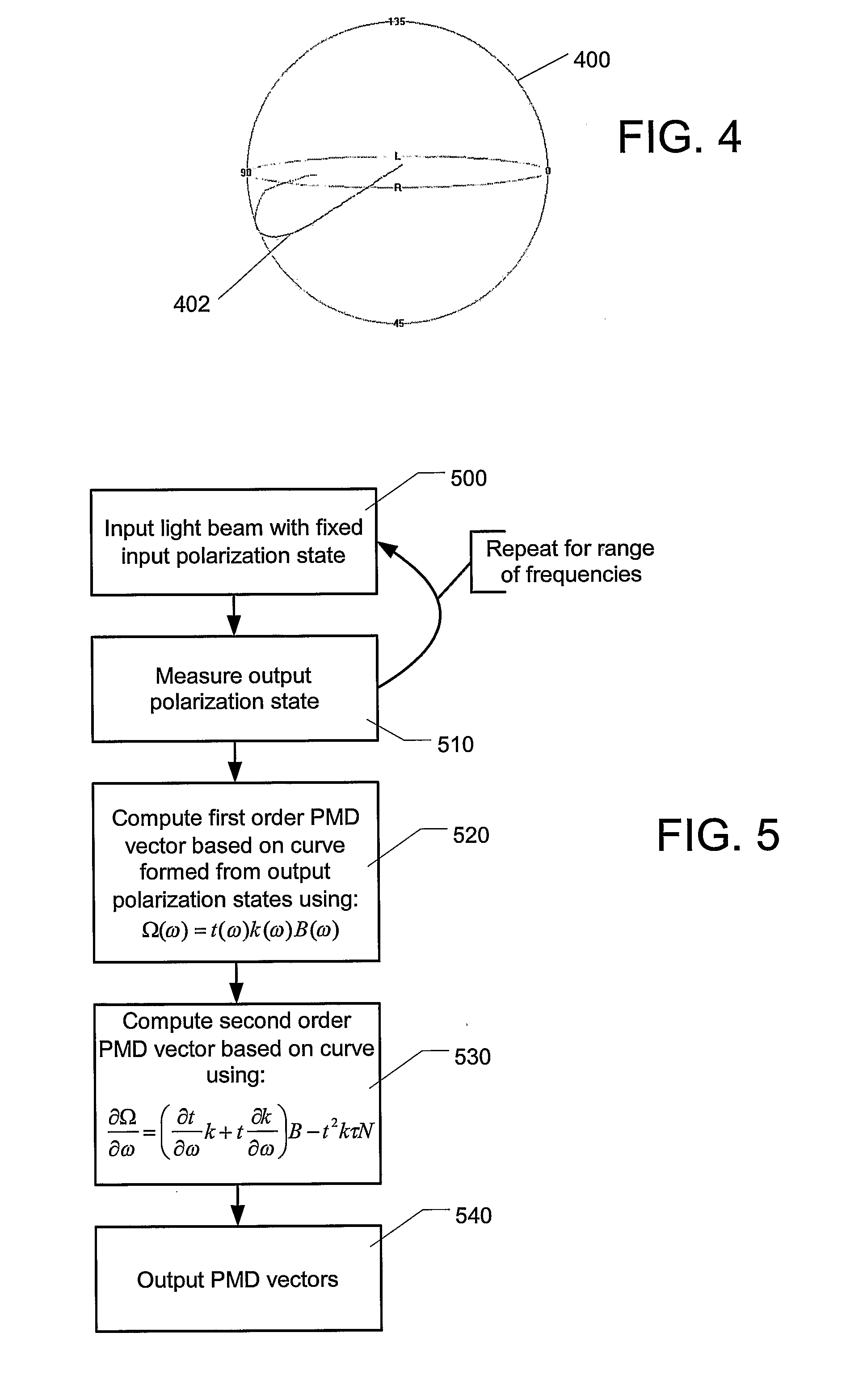Differential Geomety-Based Method and Apparatus for Measuring Polarization Mode Dispersion Vectors in Optical Fibers
a technology of optical fiber and dispersion vector, applied in the direction of optical apparatus testing, optical radiation measurement, instruments, etc., can solve the problems of limited accuracy, complex actual curve traced on the surface of the poincaré sphere when the wavelength is varied, and performance of high-speed optical communication systems. , to achieve the effect of reducing the likelihood of error and relatively quick measuremen
- Summary
- Abstract
- Description
- Claims
- Application Information
AI Technical Summary
Benefits of technology
Problems solved by technology
Method used
Image
Examples
Embodiment Construction
[0034]The present invention relates to determining the first and second order PMD vectors (and, possibly, higher order PMD vectors) of an optical device, such as a single-mode optical fiber, using only a single input polarization state. Advantageously, because only one polarization state is used, the measurements can be performed more rapidly than prior art methods such as Jones matrix eigenanalysis or the Müller matrix method, while producing results that similar in accuracy. Because the methods of the present invention may be performed rapidly, their results may be more accurate than prior art methods, because the output polarization state for a long length of optical fiber may vary over the amount of time that it takes to perform prior art measurements.
[0035]FIG. 3 shows a measurement apparatus that may be used in accordance with the present invention. Measurement apparatus 300 includes a tunable laser source 302, a fixed polarizer 304, the device under test (DUT) 306, a polarime...
PUM
 Login to view more
Login to view more Abstract
Description
Claims
Application Information
 Login to view more
Login to view more - R&D Engineer
- R&D Manager
- IP Professional
- Industry Leading Data Capabilities
- Powerful AI technology
- Patent DNA Extraction
Browse by: Latest US Patents, China's latest patents, Technical Efficacy Thesaurus, Application Domain, Technology Topic.
© 2024 PatSnap. All rights reserved.Legal|Privacy policy|Modern Slavery Act Transparency Statement|Sitemap



